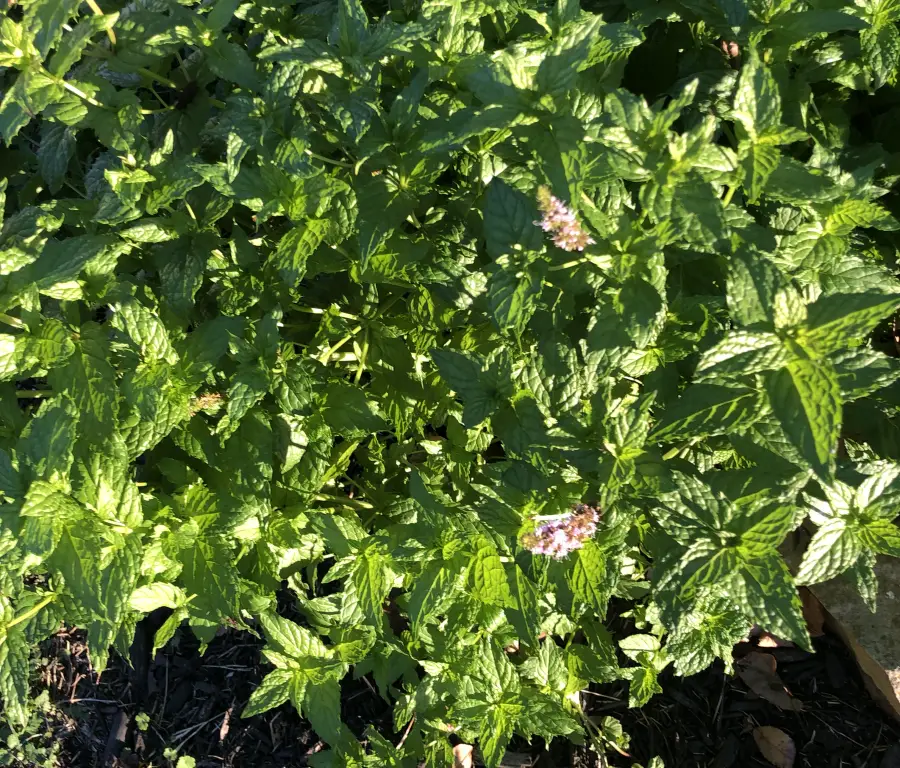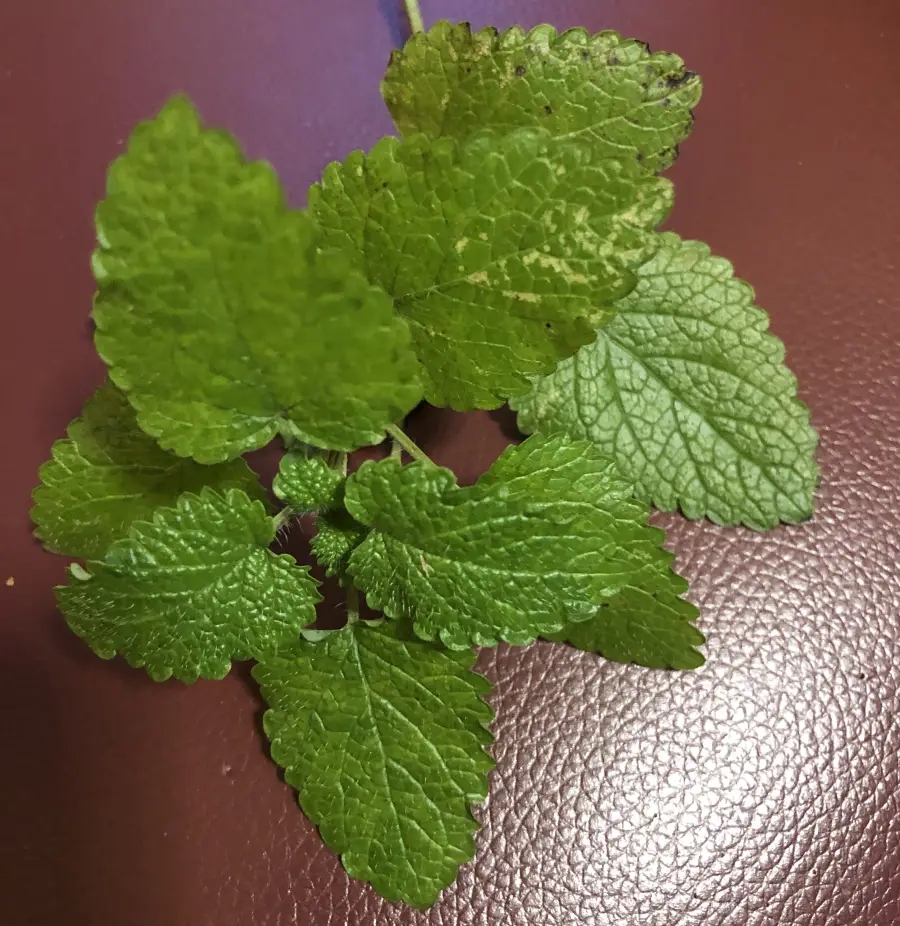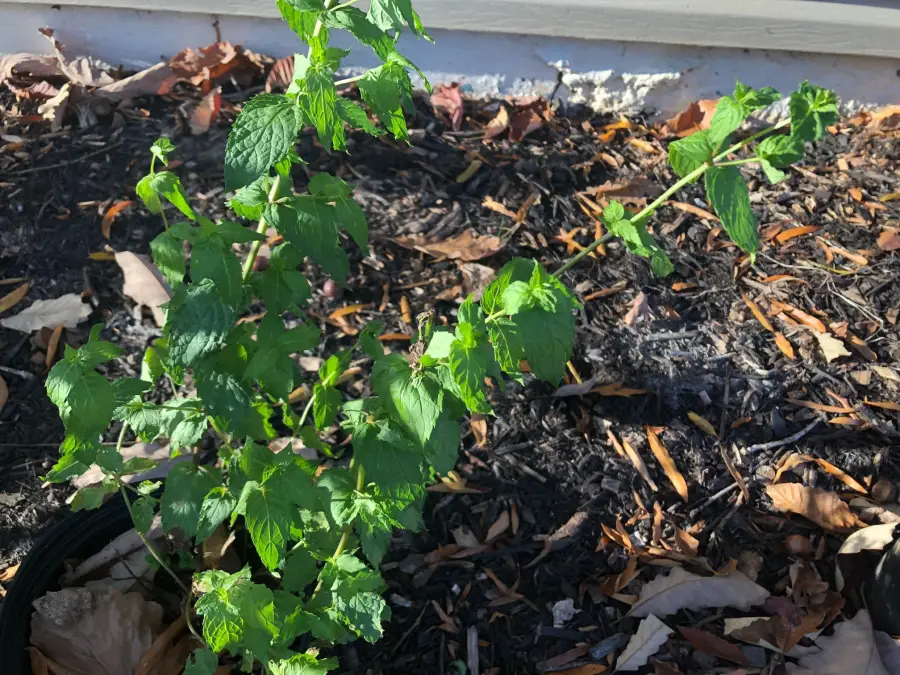There’s nothing like a quick stroll through your garden and being greeted with the inescapable aroma of one of the best herbs known to man…mint, the flavor that inspires many of our favorite snacks and household products.
Some plants that look like mint, but are not actually the same are Lemon Balm, Melissa Axillaris, and Red Dead-Nettle. There are also plants that give off similar smells and offer the same ‘cool’ feeling. Some of these are Jamaican Mint, St. John’s Mint, Australian Peppermint, and Korean Mint.
However, just how unique is mint? Is it truly one of a kind or are there other plants that share similar visual (and olfactory) properties?
Let’s take a look, shall we?

Contents
What Plant Looks Like Mint But Isn’t?
Ah, the distinctly cool and refreshing whiff of mint…there’s nothing like it. Or is there? Could there be other plants that look like mint?
There are several plants that look like mint that can be found in many flower beds and gardens in residential settings. The leaf structures and plant shape are fairly similar. Some of the more popular varieties are:
- Lemon Balm
- Melissa Axillaris
- Red Dead-Nettle
Before we know how to recognize a mint look-alike, we should find out what is meant in general when someone says mint. Even university health groups and department like UCHealth out of the University of California system acknowledges that the feeling of coolness from mint is a ‘trick’ of sorts. This feeling can also come from other plants.
Well, let’s begin by stating that “Mint” is a genus of several mint species. That’s right, there isn’t just one plant that bears the mint name. There are several.
In fact, there are over 600 (you read that correctly) species, subspecies, and hybrids of mint! These plants do share certain base characteristics but each manages to put its unique spin on what it means to be a mint plant.
What Is The Difference Between Mint And Peppermint Plants?
The most common species is arguably peppermint (Mentha piperita), which is actually a crossbreed of spearmint (Mentha spicata) and water mint (Mentha aquatica). The plant can be found in gardens and wild forests all around the world.
Mint is a general name given to a specific species of plants known by the name Mentha. There are several types of plants in the Mentha species in which Peppermint is one. It is a crossbreed or hybrid version of tow types of mint plants and is one of the more popular consumer versions.
Peppermint is most commonly used for herbal teas, both as the sole ingredient or as part of a mixture with other herbs. It is also used as a flavoring for ice cream, beverages, and (of course) candy! It is also used for domestic products such as soaps, surface cleaners, and toothpaste.
Peppermint plants are characterized by their dark green leaves, squarish stems, and pink/lavender flowers. The leaves are fuzzy and have jagged edges like a saw. Plant height can range from 18-36 inches.
Like a lot of mint species, peppermint can spread very quickly thanks to an aggressive network of stolons and rhizomes (aka “runners”). Heck, peppermint is often regarded as an invasive weed because of how fast it spreads.
Is Spearmint The Same As Mint?
Spearmint (aka common mint) is another widespread variety or species of mint that has similar uses to peppermint. It is perennial, which means it thrives all year round. Like peppermint, spearmint can be a nuisance for gardeners with little use for it.
Spearmint is another species of mint like peppermint and is one of the most common found in gardens and grocery store produce departments. It is distinct from peppermint in intensity and type of smell. It also has longer leaves which lend to the word ‘spear’ being included in the name.
Spearmint is so-called because of its leaves, which are shaped like spear tips. Spearmint stems, though squared as well, are often hairier than those of peppermint. The flowers are conical in shape and can either be pink or white. Mature spearmint plants can be between 12-24 inches tall.
Here is a great way I recommend to get some of these mint, mint-like, and mint related plants. Amazon has a three plant potted kitchen herb selection that you can get sent right to your front door.
Is There Another Plant That Looks Like Mint?
Now that we’ve looked at the classic examples of mint, let’s take a look at some would-be lookalikes. Here we are concerned with the look of the plant and leaves and will deal with the smells a bit later.
The distinct leaf shape of the spearmint that resembles well, a spear, the green color, and plant size will what determine the plants that make this list.
Lemon Balm

One plant that is often mistaken for mint, but isn’t officially in the Mentha genus is lemon balm (Melissa officinalis), a perennial bushy herb that originated in central Eurasia. While not in the same genus exactly, lemon balm is still in the Lamiaceae family, which is commonly referred to as the “mint family”.
Like a lot of mint plants, lemon balm is used for flavoring as well as herbal teas. It is named for the lemony scent of its leaves, which are also used to produce perfume fragrances. Lemon balm is also a popular ornamental plant in many homes around the world.
Lemon balm features heart-shaped leaves with jagged edges, hence why it is often misidentified for mint species like peppermint or spearmint. Much like the latter, lemon balm plants also have pink or white flowers.
However, the main differentiator between lemon balm and these mint species is height. Lemon balm grows to a height of 35-40 inches, which is significantly taller than peppermint and spearmint.
Melissa Axillaris
Melissa Axillaris
Another non-Mentha plant that you might come across is Melissa axillaris, a lovely cousin of lemon balm that is native to mainland China and other parts of East Asia. Axillaris has a strong resemblance to peppermint due to its jagged leaves.
This plant is frequently used for herbal and ornamental reasons in its native lands and it is slowly being brought over to the States by enamored botanists.
Red Dead-Nettle
Red dead-nettle (Lamium purpureum) is another lovely member of the Lamiaceae family. This annual herb is used for culinary and medicinal purposes.
Red dead-nettle is native to many parts of Europe and Asia. Rookie botanists may mistake it for a mint species because of its jagged-edged leaves. However, its hairy leaf surfaces mark it out as a nettle. It is called “dead” because, unlike typical nettle plants, it does not sting.
Here are some more informative articles you will like…
- A Mint Lawn? A Legitimate Alternative Ground Cover?
- What To Do About Tomato Plant Leaves Drying Up
- How To Save A Dying Vine By Knowing What Ails It
What Other Plants Smell Like Mint?
Now that we’ve spotted some mint lookalikes, let’s briefly talk about common mint “smell-alikes”. There is not just one aspect to mint varieties. Each have a distinctly mint look but also smell. So, what plants smell like mint?
At the heart of the classic minty smell and taste is a chemical compound known as menthol. The majority of Mentha plants have varying degrees of menthol, with Japanese mint (Mentha arvensis) and peppermint boasting the highest concentrations.
That said, menthol is not exclusive to the mint genus and can be found in countless other plants. As a result, some of the plants with this minty smell have even earned the title of such while not being “true” mints.
Lemon Balm
We’ve already touched on lemon balm and its lemony scent. What we hadn’t spoken about is the secondary scent that it releases…mint. Granted, lemon balm’s menthol concentration is pretty low compared to Mentha plants.
Jamaican Mint
Jamaican mint (Satureja viminea), which is native to Caribbean islands, has a lovely aroma that is very similar to peppermint. It has traditionally been used to flavor fish and meats on the islands, as well as for teas and medical concoctions.
St. John’s Mint
Another Caribbean herb with a minty aroma is St. John’s mint (Micromeria brownie), a popular choice for herbal tea lovers.
Korean Mint
Korean mint (Agastache rugosa) is an awesome plant that will add some style (and a sweet fragrance) to your garden. Like Jamaican peppermint, Korean mint is a great way to flavor seafood. You can also take your tastebuds on an adventure by using the plant leaves to make Korean pancakes.
Australian Peppermint
Speaking of adventure, your nostrils will also appreciate the coolness of Australian peppermint (Eucalyptus dives). This darling from Down Under actually grows to 50-70 feet. In addition to being the ideal habitat for the Koala bear, Australian peppermint has the classic scent of its more common namesake.
Other plants with a minty aroma include (but are by no means limited to):
- Mint shrubs (Elsholtzia stauntonii)
- Mint thyme (Thymus mint)
- Pungent peppermint (Pelargonium tomentosum)
- Variegated mint rose (Pelargonium asperum)
- Chocolate mint (Pelargonium quercifolium)
Though some of these can have connections to different mint species, families or the like, many of them have ‘mint’ in their names simply because of the similarities in the smells they give off with the more famous plants they resemble.
What Type Of Mint Is Sold In Supermarkets?

If there are over 600 different species of mint, what are the common ones most people use in cooking, baking, and confectionary foods? What are the types of mint sold in supermarkets?
The most common type of mint sold in supermarkets is either peppermint or spearmint. Of these two, most people will see spearmint on grocery store shelves and in produce sections. It can be found as a leafy plant or ground into what is referred to as essential oils.
This is also something you can grown in your own flower beds and gardens. It can be fairly invasive and will come back each year stronger and taking more space. It is a good idea to keep it cut back and in control unless your goal is to have an entire garden or flower bed of mint.
It is a great way to add not only color, but distinct aromas to your beds and garden. A faint smell can be detected by simply walking by, but you can also do as my wife does. She loves to pick a leaf when we are heading out to the car or coming in if her hands aren’t full. Rubbing it between her fingers and smelling it is one of life’s simple joys.
Are Sage And Mint In The Same Family?
With many types of plants used in cooking coming from the mint family, one of the more popular ones prompts many to ask, “Are sage and mint in the same family?”
Sage is part of the mint family along with many other popular ones that are used in a wide variety of recipes in many countries and cultures. Sage or Salvia officinalis is accompanied in the mint line of plants by savory, rosemary, marjoram, thyme and lemon balm.
Keep in mind that there are many levels of relationship in the plant world as human’s have categorized them. Family is not the same as genus and though some plants are not related on one level, they may have a link on a large level above.
With sage being in the same family, it is relatively close to mint and thus is similarly good for use in recipes. Though some cousins of mint are good for cooking, others will not be as usable.
Sage is one that is very popular for use in Thanksgiving turkey and other holiday meals. Thanksgiving is not Thanksgiving without Sage.
The Final Touches On Plants That Look Like Mint…
There you have it. Either this article will have answered your questions surrounding plants that look like mint or given you much more information that you needed. In both scenarios, I hope you come away with a few useful facts about this very popular herb.
To see other great articles like this one…
- What Color Greenhouse Should I Choose? (Revealed)
- What is horticultural grit? (Experts explain)
- Can You Eat Cabbage Leaves – Are The Outer Ones Edible?
References
https://bonnieplants.com/how-to-grow/growing-lemon-balm/
https://www.qualitylogoproducts.com/blog/different-types-mints/
